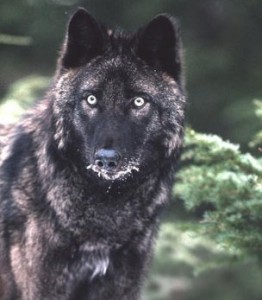Southeast Alaska’s subsistence advisory panel has recommended increasing the subsistence quota for wolf hunting and trapping on federal lands on Prince of Wales Island.

The Southeast Alaska Subsistence Regional Advisory Council disregarded advice from its own staff to recommend upping the wolf harvest quota.
Island residents and tribal organizations had brought the proposal to the council, Vice Chair Cathy Needham of Juneau said.
“Trapping of wolves has been an historic opportunity for rural residents on Price of Wales Island, not just rural residents but also tribal entities,” Needham said Thursday. “There’s a long history of being able to trap for animals such as wolf.”
This fall’s estimate of Alexander Archipelago wolves – a distinct subspecies of the gray wolf — was 231 animals, allowing a harvest of 46 wolves, or a fifth of the population.
The council is recommending the quota be increased to 30 percent, which using this year’s numbers would’ve been 69 wolves.
Any hunting or trapping of Alexander Archipelago wolves is already controversial.
“This population has been petitioned to be listed under the Endangered Species Act – twice. And it’s also involved in some litigation,” said Bruce Dale, director of the Alaska Department of Fish and Game’s wildlife conservation division.
He wrote to the advisory council saying under-reporting of wolf kills was an issue on the island. He said there also are concerns that the level of killing is unsustainable.
State biologists believe the wolf population is rising. But Dale said it’s too soon to raise the quota.
“We’d like to slow the growth a little bit but we don’t want to cause a decline or even level it off until we have a management plan in place,” he said.
Needham admitted there are known unknowns when it comes to the island’s wolf population.
“What is unknown in this whole process is what a sustainable or carrying capacity for wolves on the island is,” she said.
The advisory councils were created in the 1990s to represent the interests of hunters and trappers on federal lands. She said that’s what the advisory council is doing under its mandate from the Alaska National Interest Land Conservation Act, or ANILCA.
“If you talk to local, knowledgeable trappers on the island, 230 is getting on the high end of that population,” she said. “Being able to provide for the harvest of more animals is something that they would like to be able to exercise – so we’re responding to that.
The regional council’s action followed hours of testimony and a 9-2 vote. Its decision isn’t binding, but serves as a formal recommendation to the statewide Federal Subsistence Board, which meets in April.
